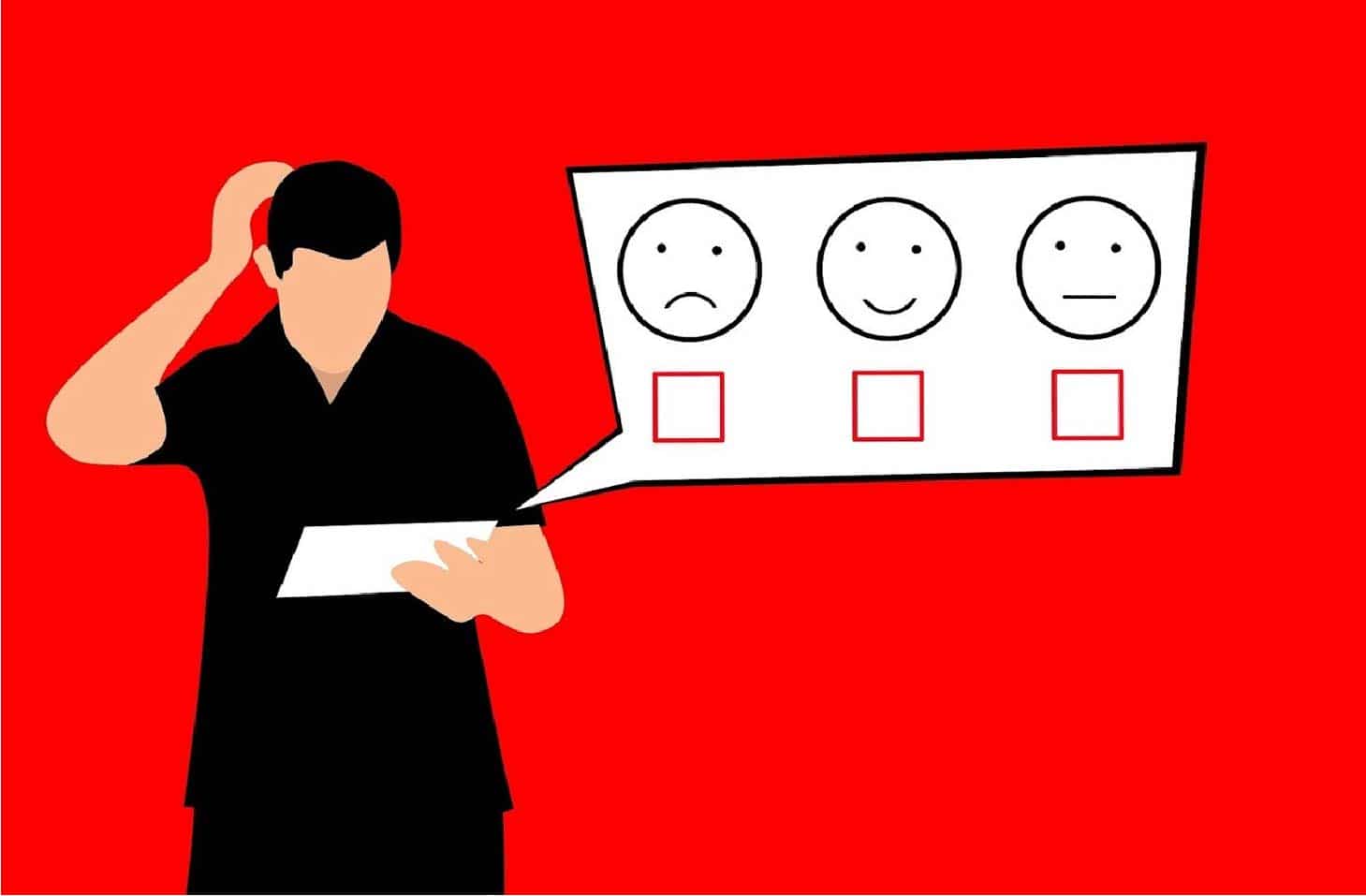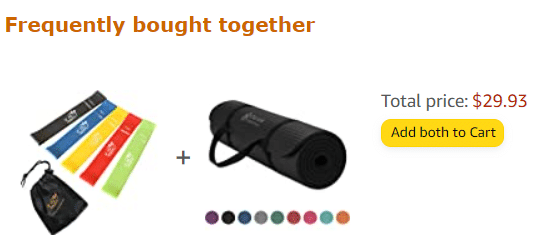5 Signs That Your Customers are Happy — And How to Make Them Even Happier

Source: Pixabay
You may have adopted the latest industry trends and exceeded the market standard. Yet, a customer’s happiness is what will be the most important thing for you.
The more happy customers you have, the less are the costs for marketing and the higher is the profit. This research claims that by focusing on customer retention improvement, you may increase your profits by as much as 95%.
How is that possible? Customers who rate a company 5 out of 5 are 6x more likely to buy from it again than those rating 4.8. At the same time, unhappy customers don’t usually address the issue directly, they simply leave and share their negative experiences with an average of 12 more people.
The agenda of this article is:
- Determining your customers’ happiness;
- Guessing the signs of angry clients;
- Boosting customer satisfaction and increasing retention.
First, ask yourself the following questions:
1. Do your customers return?
If you’re not in the hospitality business, spotting a regular customer may be complicated. Look in your data and find customers who turn to your company on a regular basis. There might not be a schedule, yet you should be able to trace any signs that your store pops up in their mind first as they require a certain product or service.
If a customer doesn’t follow or isn’t active on your competitors’ blogs and social media pages, keeps buying from you, gives you feedback readily — he/she can most surely be called your loyal customer.
Another way to know whether a customer can be called a regular is to see how much they spend at your store. By stats, the 20% of customers who are loyal to a business are likely to bring 80% of total profit. Also, as repeat customers stay with a company for more than 2 years, they tend to spend 67% more than they did initially.
If you see that a person has purchased once and never returned again, chances are they were not satisfied. You might never learn the true reason why a specific customer never showed up without tracking the reason for churn but you can cut future losses.
Here are actionable ways to stop losing customers:
Improve customer service: After the sale is made, a support agent becomes the customer’s primary contact point. Ensure your client can rely on your customer care for any issues while using your product or service. Instead of assigning a personal agent to each customer, go with a knowledge base and form guidelines for your staff on how to act in case a problem needs human attention.
Create a loyalty program: Over 70% of consumers see loyalty programs as an important aspect of their relationship with a brand. They can simplify your customers’ shopping experience with an electronic card and help them gain rewards for their next purchases. In return, you’ll get access to their data, which you can use to enhance your marketing.
Highlight positive reviews: Encourage customers to leave reviews about your company on your website or their favorite platform. Interview your existing customers once in a while in a personalized email or send an automated thank-you message asking to rate the client’s experience after each deal. Then, showcase positive testimonials on your website, include them in a newsletter, or use social media to build trust.
Vary your offers Depending on a business, customers may not need to buy the same product or service over again. Find ways to complement your offers or just give an alternative. This way, you will spark customer interest and increase your average transaction value. For instance, Amazon always offers a “Frequently bought together” item that can be used along with the considered product:

Source: Amazon.com
And Dropbox does smart by offering their premium feature at key points during the customer journey. Note that they give several options to upgrade: delete one’s existing files, invite friends or purchase more space.

Be active on social media: 86% of social media users report they will likely prefer the brand they follow on social media over a competitor. So, grow your following by interacting with your audience. Like, comment, retweet, respond to reviews and share your best content. It may be time-consuming, but that’s the way to make your customers happy. Moreover, you can always choose from a variety of social media marketing platforms and make the process faster.
2. Do your customers bring friends?
Repeat customers that are happy with your products and services are likely to become your brand advocates and recommend your company to family and friends. They have had business with you several times, got satisfied, and trust you in terms of quality and support. So, these people feel safe talking about being your client to other people. Statistics say that if you ask a happy customer to refer their friends to your company, you’ll get 2 for each person on average.
On the contrary, unhappy customers will keep silent and simply leave. 96% of customers who were not satisfied by a company’s service never complain. Yet, the same stats show that 13% of them tell more than 20 other people about their negative experiences, which can harm your business more than the help from your happy brand advocates.
Still, there is something you can do to maximize customers’ happiness and encourage them to promote your business:
Identify your prospects: Figure out what customers bring you the most profit. Determine their demographics, business, industry, problems they are trying to solve with your product or service. Then, focus your efforts on attracting this kind of customers.
Offer a special deal: Provide something special to your referrals: 30-day free access or 3 months of discounted pricing. Over half of respondents believed rewards were very important for their purchasing decisions. So, use this opportunity to convince referrals to choose your company.
Create referral collateral: Use all your communication platforms with consumers — email, social media, website — to present them with the benefits of doing business with you. Make sure these materials also give actionable information and answer questions they might have.
Respect customers’ decisions: Some clients just don’t feel like giving referrals.
They simply might have had a distressing experience before, like recommending someone who turned out terrible. Instead of insisting, keep providing excellent service so they can recommend you when and because they want to, not because they are pressed. You still can ask for a video testimonial, a written review, or a survey on how you can improve your product or service.
3. Do your customers react to your posts?
You see people commenting on your blog and tagging you on social media. Maybe they even reach out to you to ask about the recently posted discount? If that’s so, you are in their inner circle: your customers are happy with what they get from you and want to continue the relationship. A happy customer will want to know their favorite brand’s news to stay connected. Actually, there is a study showing that three out of four consumers tend to spend more on a product from the brand they love, which stresses the importance of emotional connection with customers.
Unhappy clients will ignore your content, calls, and even discounts. Your special offer emails get fewer opens? Customers might not value your product or service anymore, no matter the price.
It takes 12 positive customer experiences to make up for one negative. With this in mind, let’s see what you can do to increase engagement:
Reply to comments quickly: 53% of social media users expect to get a response from the brand they interacted with within an hour. Another reason to monitor user activity on social media is algorithms that evaluate engagement. If you respond fast, you can get more comments and rise higher in a social media feed. The same applies to your blog posts: if you want a conversation, answer on time.
Initiate a comment battle: Sometimes it is fun to pit two groups with contrasting opinions. This will boost your engagement and add up to your mischievous side (if that’s applicable, of course). The main advice here is to choose “light-hearted” topics like dogs vs cats and stay away from politics and religion.
Ask open-ended questions: Asking a yes or no question is easy, but it is likely to result in very few people reacting. Instead, ask something thought-provoking, like what was their favorite place in childhood and don’t forget to include emotional trigger words to encourage your subscribers to interact with your brand. Make sure the question isn’t too intricate, though.
Know your timing: Your audience won’t be active while they are at work or asleep. Check your social media insights to see when your followers are the most active and adjust your engagement tactics to that timeframe.
4. Do your customers leave reviews?
This is the easiest and most straightforward way to see if your customers are happy — they express their appreciation in reviews. However, receiving sudden sincere reviews is an exception rather than a rule. There is evidence that around 50% of satisfied customers actually leave reviews if asked, otherwise they keep silent even if they received an outstanding experience.
Unhappy customers often do not complain because they believe there is no point or it requires too much effort. And that’s a tragedy because without them complaining you won’t know what went wrong and therefore get no chance to fix it.
Still, there is something you can do to encourage both your happy and upset customers to share their experiences:
Be present on your audience’s favorite channels: Test the channels to see where your customers prefer to spend the most time. Reach out to them in a friendly manner and simply ask to leave feedback.
Make it easy to comment: Generally, customers don’t actively search for ways to share a review unless they are angry. Offer them simple ways to comment. Include a direct link to your review page along with a CTA in a personalized email. Post about your product or service on social media and invite customers to share their experience using it in the comments.
Reward customers: Suggest a small incentive for a review. This should be something valuable but not too big, so it won’t feel like buying a review.
Thank your audience: If your platform allows, thank everyone who comments on your product or service. You can even go as far as rewarding the most active reviewer. This will turn a happy customer into a loyal brand advocate and encourage others to try and win something too.
Track KPIs to target satisfied customers: You want not just reviews, but good reviews. Spot your most happy customers and encourage them to leave feedback. Use your CRM data to measure customer satisfaction and apply OKR tips to set the right focus for your team. This way, not only will you maximize the number of excellent reviews, but also get insights into common sources of distress for unhappy customers. Then, you can work on the issues and even turn unhappy customers into happy ones.
Work with negative comments: Receiving criticism is hard, but that’s your opportunity to grow. Always respond to negative feedback, explain the reasons why an issue happened, and work on resolving it. Seeing that a company accepts its mistakes and puts an effort in improvement will positively impact your relationship with customers. Also, if you ignore a negative comment, bad word-of-mouth can build up and damage your reputation.
5. Do your customers participate in surveys?
Customer satisfaction surveys give valuable insights into your clients’ current needs. Providing them with relevant and personalized offers works for building loyalty, so you can spend less on attracting new clients. If your customers are happy, they will enjoy the opportunity to provide feedback on your company’s performance. In turn, use surveys to grow awareness about your other products or services and benefits.
But what if your queries get unanswered? The odds are those customers don’t believe you’re going to act on their feedback, so they ignore the chance to share.
The only way to prevent your clients from getting a poor experience with your company is to improve your offer and customer service. But here’s what you can do to get more clients to participate in surveys:
Offer the value: Before a customer will do something for you, they should know what’s in it for them. Explain to your audience why their feedback is important, how it is processed and analyzed and how you address the pressing needs.
Watch the timing: Send a survey while the impression from the interaction is fresh in the minds of customers. The recommended time is within 24 hours for most businesses. As for phone surveys, the best option is to keep a customer on the line after the interaction. There isn’t a set time for emails and SMS surveys, so try to send them as soon as possible.
Use customers’ favorite channels: Just like with reviews, make it easy for your customers to fill out a survey. Tailor it to the channels your audience prefers. If they prefer live chat, send a pop-up survey after they completed the conversation with an agent. If you use emails, send a follow-up with a link to the survey. If you decide to turn website visitors into survey participants, make sure that you drive website traffic.
Final Thoughts
Customer happiness is what keeps your business alive. Satisfied customers buy more and bring in more clients. They fill out surveys and let you use their personal information to improve your business and get even more paying customers. Keep an eye for the signs that your customers are happy or not. This is a sure-fire way to know whether you’re heading in the right direction and quickly determine what you have to focus on next.
Sell more, understand your customers’ journey for free!
Sales and Marketing teams spend millions of dollars to bring visitors to your website. But do you track your customer’s journey? Do you know who buys and why?
Around 8% of your website traffic will sign up on your lead forms. What happens to the other 92% of your traffic? Can you identify your visiting accounts? Can you engage and retarget your qualified visitors even if they are not identified?


